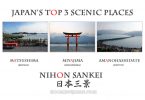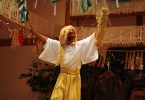Ise Shrine is one of Japan’s most sacred places and thus popular among pilgrims and tourists. It’s no wonder that it has been designated a National Treasure by the Japanese government.
If people ask for shrine recommendations, Ise Shrine is usually mentioned.
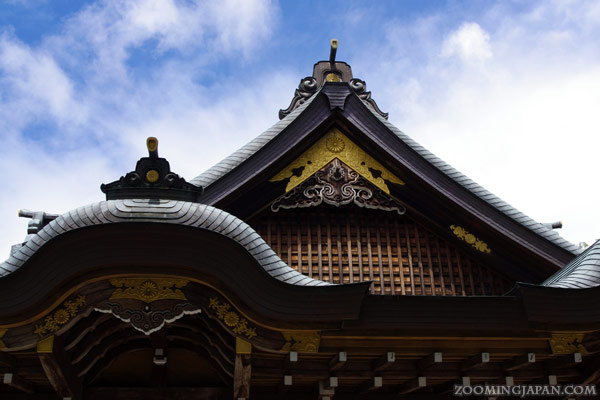
The Ise Grand Shrine also known as Ise Jingu (伊勢神宮) is located in Ise City, Mie Prefecture (map). You can visit as a day trip from Kyoto / Osaka or even from Nagoya.

I know that everybody is always talking about THE Grand Ise Shrine, but this is misleading.
In fact, Ise Jingu is a shrine complex with over a hundred shrines. The two main shrines are Naiku (内宮) and Geku (外宮) and they’re about 6 km apart from each other! Both shrines are a true sanctuary, surrounded by 90 hectares of forest that has been around since the shrine’s foundation.
If you’re short on time, you might only be able to check out one of them. In that case, I’d recommend visiting Naiku.
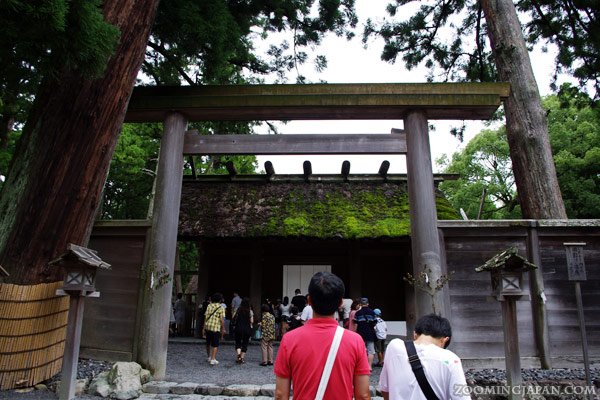
Naiku (Inner Shrine of Ise Jingu)
The Inner Shrine (officially known as “Kotai Jingu”) can be accessed by bus from Iseshi or Ujiyamada Sta. or from the Outer Shrine (~ 10-15 mins). Alternatively you can take a bus (~ 5-10 mins) or walk (~ 30 mins) from Isuzugawa Sta.
There’s also a pilgrimage route connecting both shrines. Please know, if you want to do the “tranditional pilgrimage”, then you should visit the Outer Shrine first.
Naiku is dedicated to the goddess of sun, Amaterasu Omikami, who’s considered the ancestor of the imperial family.
Naiku houses the Sacred Mirror of Amaterasu which is one of the Three Sacred Treasures of Japan (sanshu no jingi, 三種の神器). It is considered a sacred object in which a god or spirit resides. Unfortunately the mirror is kept hidden from the public.
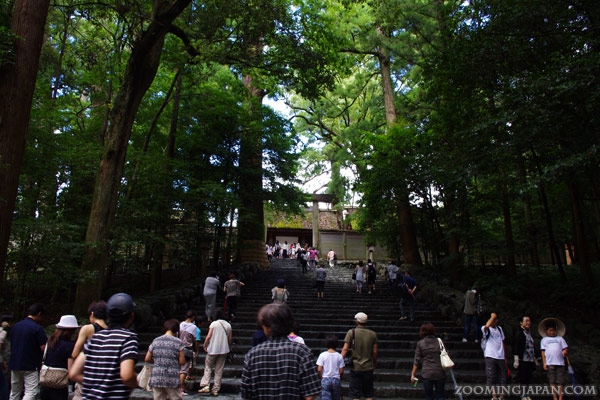
Stairs leading up to Naiku.
In fact, it’s such a holy place that access to the main hall that enshrines Amaterasu is strictly limited and surrounded by fences. Only members of the royal family are allowed to enter.
Furthermore, only a female member of the Imperial House of Japan can become the chief priestess of Ise Shrine.
In imperial times, the priestess was always an unmarried princess.

As a tourist you can peek at the main building from the fences, but only the forked roof is visible. Photos are also not allowed – which makes it even more special.
Visitors can roam through the forest and enjoy all the various smaller shrine buildings.
Geku (Outer Shrine of Ise Shrine)
The Outer Shrine of Ise Jingu is called “Geku” (外宮) – oficially known as “Toyoke Daijingu”.
As mentioned earlier it’s about 6 km away from the Inner Shrine. From Iseshi or Ujiyamada Sta. you can either walk (~ 10 mins) or take a bus (~ 5 mins). If you don’t want to walk, you could also rent a bicycle or take one of the buses that connect the Inner and Outer Shrine.

This photo doesn’t display Geku. Just like the inner shrine, you’re not allowed to go beyond the fences or take photos.
Geku is dedicated to the goddess of agriculture and food, Toyoke Okami. Her original duty was to overlook the offering of sacred food to Amaterasu.

The Origin of Ise Shrine
Originally Amaterasu was worshipped in the Imperial Palace. However, the daughter of Emperor Suinin, Yamatohime no mikoto, was ordered to find a suitable place to worship goddess Amaterasu. After wandering around for decades, she finally found that location in Ise and established Naiku.
50 bells were set up to mark the area where the sun goddess is enshrined. This is also why the nearby river is called “Isuzu” (五十鈴, 50 bells).
This was about 2000 years ago. The first actual building of the Inner Shrine was established in 692 by Emperor Tenmu.
About 1500 years ago the Outer Shrine was founded. Toyoke Okami was moved from Kyoto to Ise.
The trigger in both cases was apparently Amaterasu herself as people claimed the goddess told them what to do.

The architectural style of Ise Shrine is quite unique as its name suggests “Yuitsu shinmei zukuri” (唯一神明造). It’s probably only used for Ise Shrine and nowhere else.
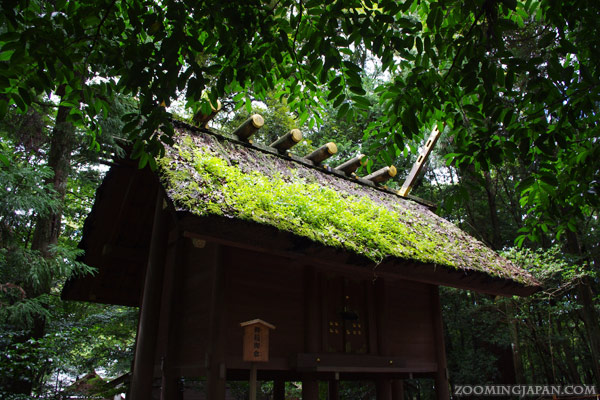
It’s a very simple style, but yet impressive. Japanese cypress (hinoki) was used for the construction of Naiku using no nails, but joined wood instead.
The style of the roof consists of the thatched reed with billets and distinctive forked finals at the ends of the ridge.

Shikinen Sengu – Rebuilding the shrine every 20 years
Also very unique about Ise Shrine is that the buildings (Naiku, Geku and Uji Bridge) are dismantled and rebuilt every 20 years. This is part of the Shinto belief of death and renewal, but also a way to pass building techniques from generation to generation. A new shrine is being built that looks exactly like the previous one, using the same techniques, the same material, no nails.
This renewal ceremony is called “Shikinen Sengu” and it goes back to the 7th century.
Every 20 years in August (1993, 2013, 2033, …) only people who live in Ise are allowed to enter the area around the sacred Naiku and Geku. Each resident is wearing festival clothes and puts a white stone to build the foundation for the new shrine.
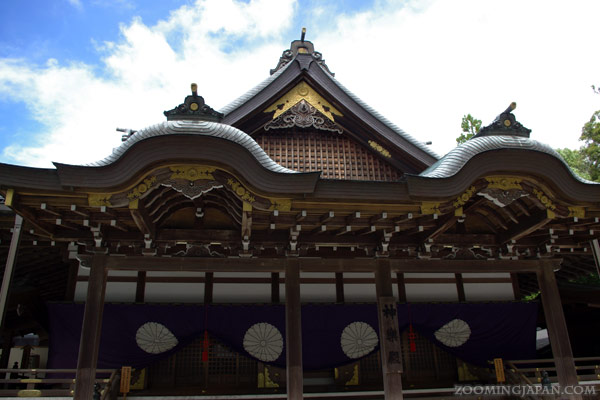
Apart from this very rare ritual, there are several annual festivals held at Ise Shrine. The most important one is “Kannamesai Festival” (神嘗祭) which takes place in October. People offer the first harvest of crops to Amaterasu.
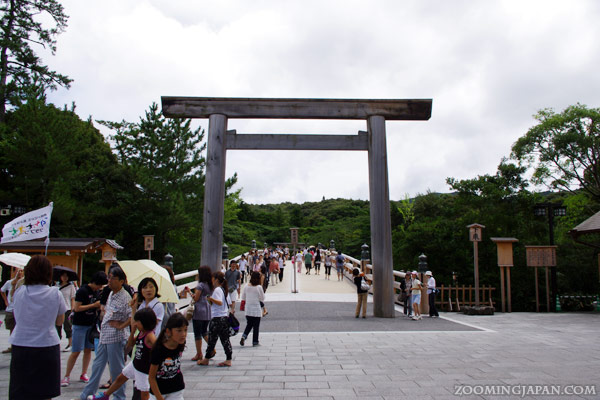
Uji Bridge – 100 meter long, wooden bridge across the Isuzugawa River – the entrance to Naiku.
The huge shrine gate is made of the former shrine building’s main pillars. After the renewal ceremony, they don’t just throw away all the material, but reuse it in many ways, also donating to other shrines all around Japan.

If you want to buy lucky charms, omikuji, ema or get a seal for you shrine book, you should pass by Kaguraden on the grounds of the Inner Shrine.
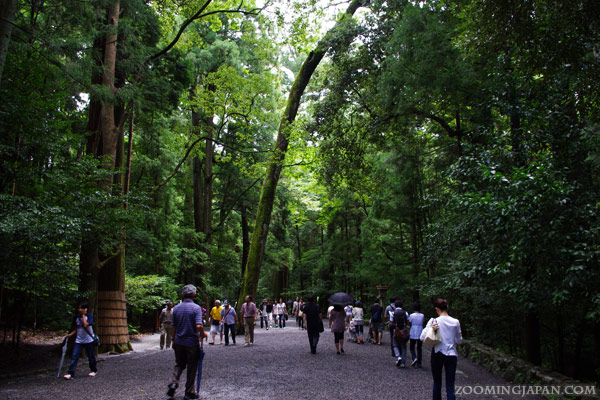
Strolling through the forest is so amazing. Some of the trees are extremely old. You’ll see people touching and hugging them.
Definitely take your time there.
If you’re worried about getting lost, you can find maps for both, Naiku and Geku, here.

What else is there to see?
Needless to say that you’ll always find deer at Japan’s most sacred places. Two other famous examples are Miyajima (Hiroshima) and near Todaiji within Nara Park. However, the deer of Ise are few in numbers and naturally shy.

Oharaimachi (おはらい町) is located right next to the Inner Shrine as this was the original route to the shrine.
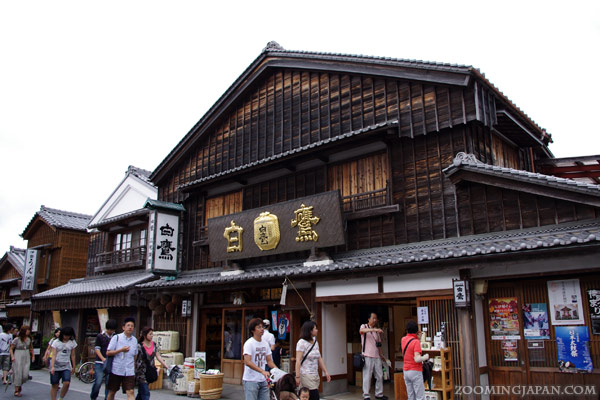
You can find traditional buildings, restaurants and small shops there.
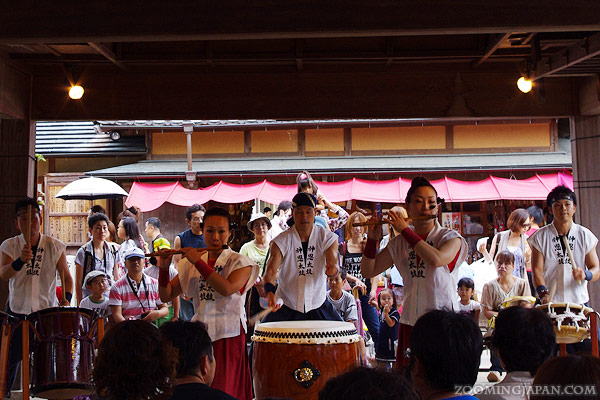
And if you’re lucky like me, you might even run into some kind of performance there!
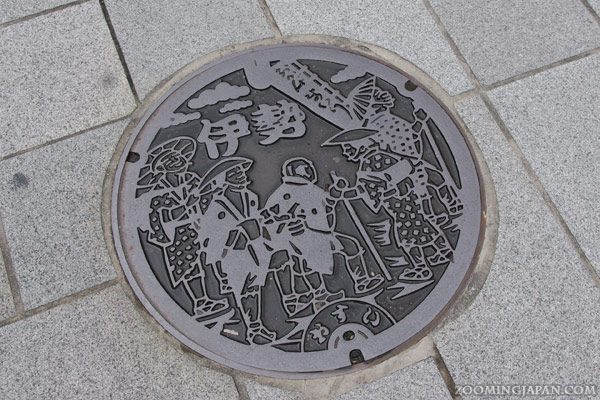
Also, don’t forget to look down, because the lovely manhole cover design of Ise City shows pilgrims.
While you cannot see the actual sacred main buildings, I think a visit to Ise Shrine is quite impressive. It’s yet a completely different experience from all the shrines and temples you’d come across in Kyoto. You can feel the ancient and sacred atmosphere there. And it’s close enough to Osaka and Kyoto, so you can easily do this as a day trip!
Ise Jingu Geku: 279 Toyokawa-cho, Ise city, Mie Pref.




